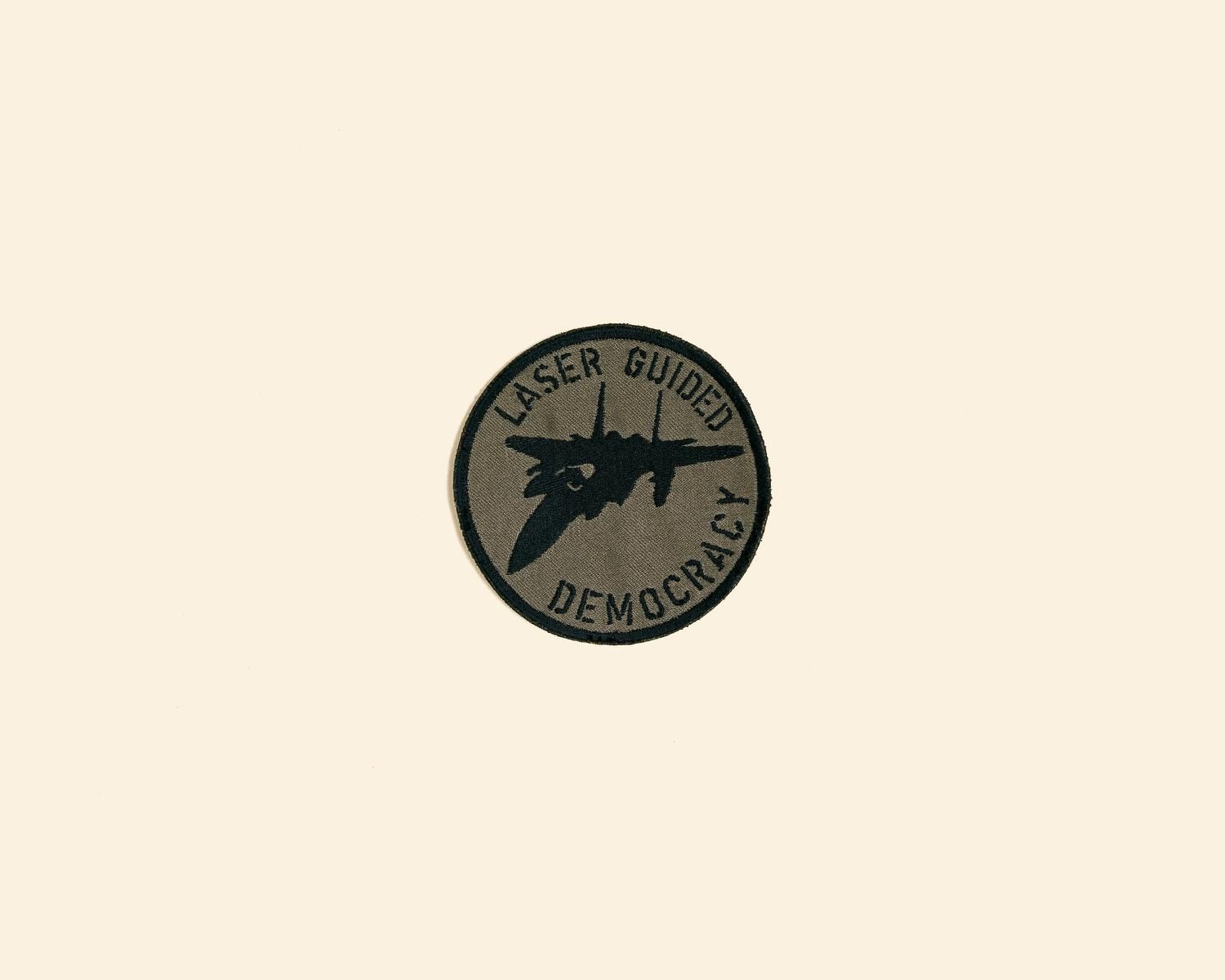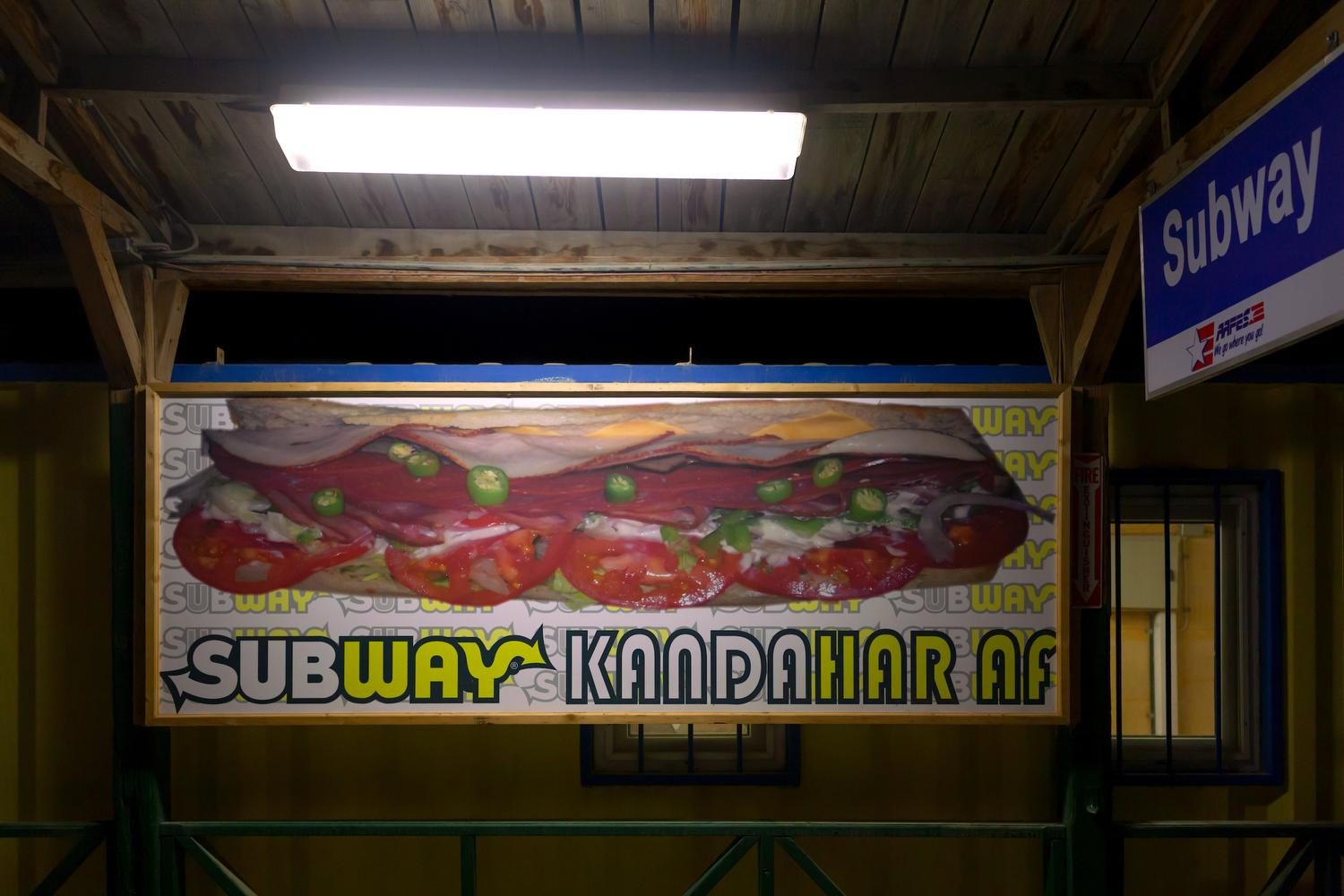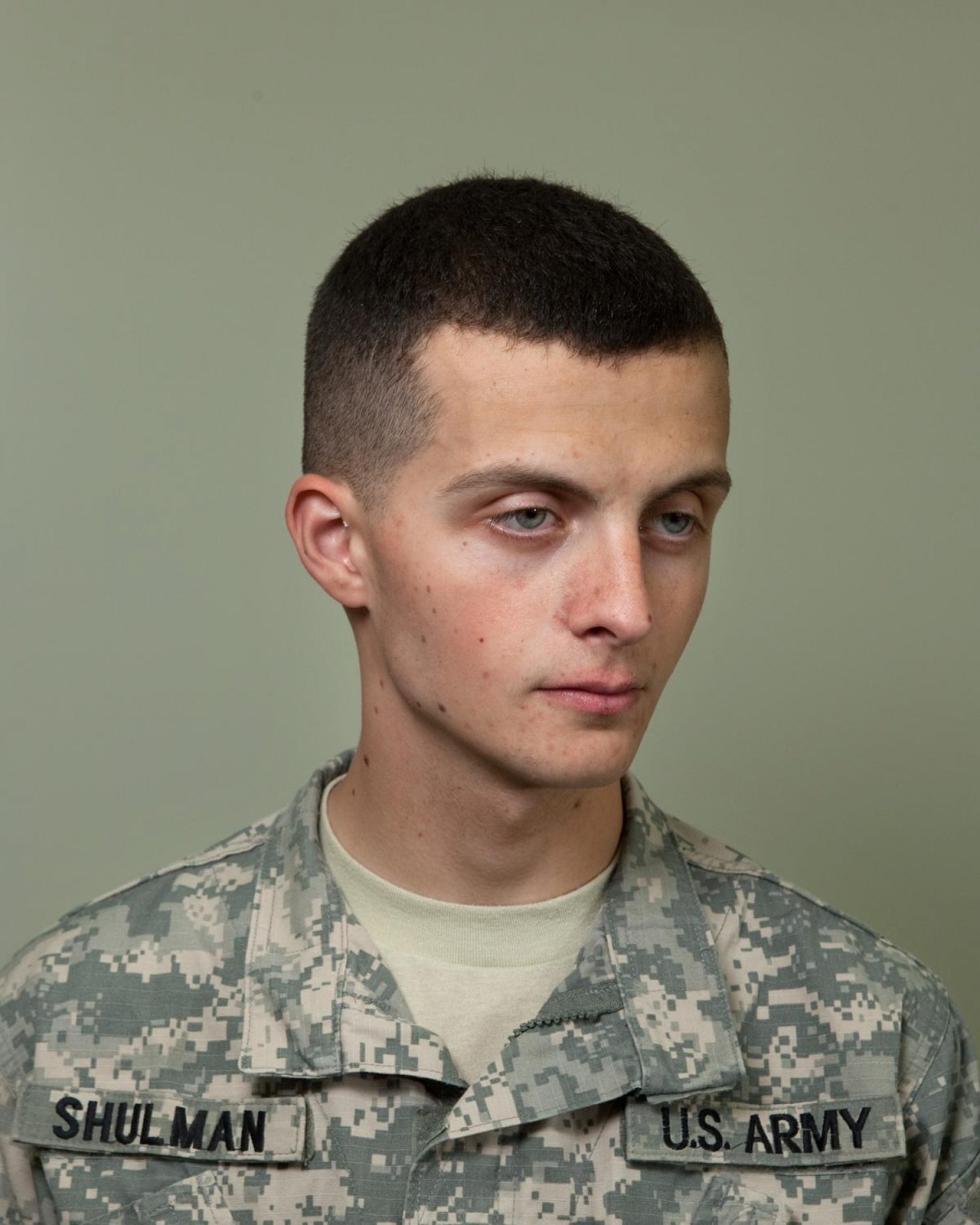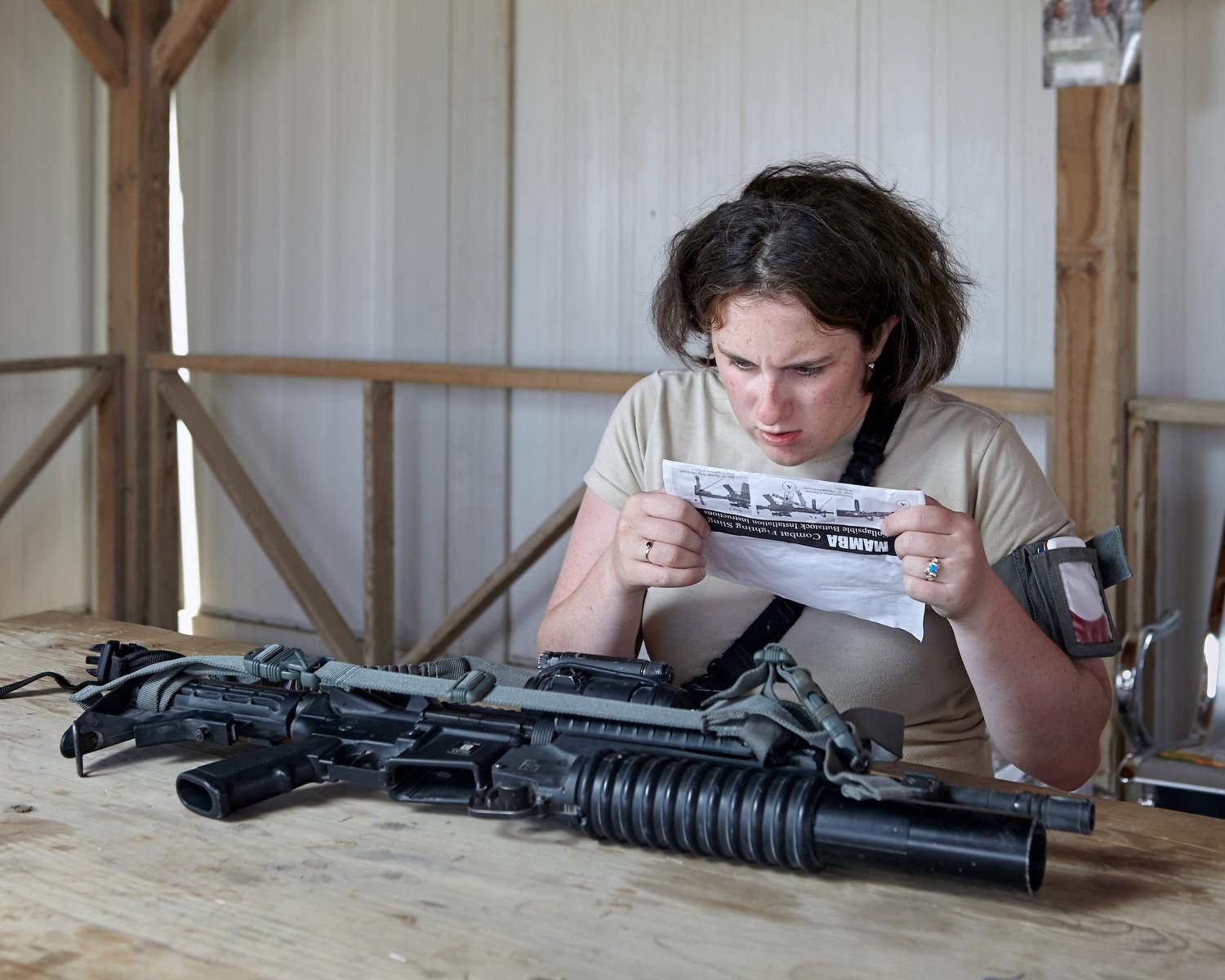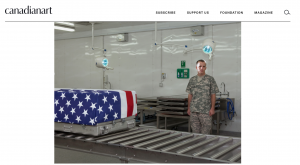May 8–22, 2020
Online Exhibition
-
1/10: Administration, Kandahar Airfield, 2010.
-
2/10: Laser Guided Democracy, 2014
-
3/10: Subway Kandahar, Kandahar Airfield, 2009
-
4/10: New Year's Eve, Kandahar Airfield, 2008
-
5/10: Philip Cheung, American flag and iron, Mortuary Affairs Collection Point, 2010
-
6/10: SSG Jeffrey Holden, Mortuary Affairs Specialist, Kandahar Airfield, 2010.
-
7/10: Camp Nathan Smith, Kandahar City, 2009
-
8/10: PV2 Ruslan Shulman, Mortuary Affairs Specialist, Kandahar Airfield, 2010
-
9/10: Hard Rock Cafe Afghanistan, 2014
-
10/10: Weapon maintenance, Kandahar Airfield, 2010
Philip Cheung’s series, The Thing About Remembering are war photographs, but they come with some caveats that derail typical expectations about this genre of photography. These are mostly quiet, calmer images, concerned with the experience of what a day-to-day existence on a military base in Afghanistan feels like in the moment. Rather than blasting viewers with the cinematic or sensational depictions of violence we’ve become accustomed to associating with war photography, these are photographs that speak to the way life continues to march on during wartime for those living the closest to it.
Cheung became a member of the Canadian military at the age of 16. A few years later, while serving overseas as a NATO peacekeeper in Bosnia, he gained the distinct feeling that most of his experience overseas was going unseen or considered by even those closest to him, “there was a disconnect between my experience and the coverage of it”. This desire to unearth what he felt was lacking in how the war in Afghanistan was being broadcast led Cheung back to the battlefield, this time no longer fully employed by the military. Between 2008 and 2014, Cheung documented life in and around the Kandahar Airfield in Afghanistan. The images in this series range between feeling almost candid, and much more systematic, mimicking the atmosphere of life on the Airfield in many ways. In two images which feel more in the moment, women on the base both appear washed in neon light, albeit performing very different actions. In one photo, Cheung captures a carefree moment, as a woman bathed in red and gold lighting lets loose on the dance floor during off duty time. In another, a woman in uniform performs some administrative work, her face lit up in the purple glow of the photocopier, with an empty office setting behind her. These images are an emotional spectrum of joy and boredom, connected by the blaze of fluorescent light, and the kind of actions that we can readily picture in civilian life.
Contrasting these images, are those which contain some of the organizational rigor that springs to mind when thinking about the military. An iron stands at the ready, next to a neatly pressed flag, both resting on a table that shows signs of repeated and regular use. In another image, a woman clutches an instructional manual with an expression of frustration and bewilderment typically reserved for furniture assemblage, yet instead of a coffee table, a service rifle is laid before her. A soldier stands solemnly with a casket covered in an American flag before him, but the surroundings feel almost factory-like, as the casket sits upon an assembly line-like conveyor, and a sink and eyewash station can be seen in the background. What makes these images feel like such piercing reminders of the toll of war, is the manner in which Cheung keeps them in the realm of the familiar. These are images that feel tied to the way we all go through routine motions in life—yet here the stakes are infinitely higher. These photographs slip from the everyday—a night out, the banality of administrative work— into horror in the gentlest way possible, a quiet kind of heartbreak that feels totally unexpected.
In addition, scattered through the series are images of objects, presented on clinical, beige backgrounds. These objects range from a bootleg Hard Rock Cafe mug (simply featuring the location of: Afghanistan), to a small souvenir patch, to a Tim Horton’s branded hat covered in a camo pattern. The methodical cataloging of these objects serve as a kind of punctuation throughout the series. They are essentially souvenirs, chosen by someone, somewhere, to commemorate an experience. It’s a casual gesture we’ve all done ourselves, but these come tinged with the trappings of war, moving them into a new plain of existence. In broad strokes, this kind of slow movement between the known civilian world and the unknowable experience of being a soldier at war, is what Cheung’s project aims to do. While conflict in Afghanistan has lasted nearly two decades, it has largely slipped out of conversation and headlines. Cheung’s project edges us a little closer to the conflict in a way that feels frighteningly tangible. Calmly, but firmly, it asks us to consider that the thing we should remember is how routinely we accept a specific kind of violence, and that tragedy can appear in simpler moments, too.
Philip Cheung was selected for the Honorably Mentioned series by Julie Crooks, Assistant Curator of Photography at the Art Gallery of Ontario. Honorably Mentioned highlights the work of artists chosen as Honorable Mentions for Fellowship 20. Fellowship is Silver Eye's international juried photography competition. For nineteen years this competition has recognized both rising talent and established photographers from all corners of the globe, and from the state of Pennsylvania.
Participating Artist
Philip Cheung is a photographer based in Los Angeles. His photographs have been exhibited at venues across North America and Europe, such as the SFO Museum (San Francisco, USA), the National Portrait Gallery (London, UK) and the Lumix Festival (Hanover, Germany).
He has been awarded grants by the Canada Council for the Arts, the Ontario Arts Council and the Toronto Arts Council, and was shortlisted for the Aperture Portfolio Prize in 2018.
The Magenta Foundation, Communication Arts, PDN’s 30 and American Photo have recognized Cheung. His work is held in the collection of Akkasah, Center for Photography at New York University in Abu Dhabi, and has been featured and reviewed in various publications, including Harper’s, the British Journal of Photography, Canadian Art, The Washington Post and TIME. A selection of work from his series Arctic Front is currently being exhibited at the Canadian War Museum in Ottawa.

